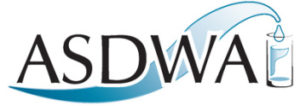ASDWA Submits Comments on Proposed Perchlorate Regulation
 On Monday, August 26th, ASDWA submitted comments (below) on EPA’s proposed perchlorate regulation. EPA took a different regulatory approach for this proposal by proposing a MCLG and MCL of 56 µg/L, as well as MCL options of 18 µg/L and 90 µg/L. EPA also proposed an option for a negative regulatory determination based on new information indicating perchlorate does not occur with a frequency at levels of public health concern and there may not be a meaningful opportunity for risk reduction through a national drinking water regulation, as required by Section 1412(b)(1)(A) of the Safe Drinking Water Act (SDWA).
On Monday, August 26th, ASDWA submitted comments (below) on EPA’s proposed perchlorate regulation. EPA took a different regulatory approach for this proposal by proposing a MCLG and MCL of 56 µg/L, as well as MCL options of 18 µg/L and 90 µg/L. EPA also proposed an option for a negative regulatory determination based on new information indicating perchlorate does not occur with a frequency at levels of public health concern and there may not be a meaningful opportunity for risk reduction through a national drinking water regulation, as required by Section 1412(b)(1)(A) of the Safe Drinking Water Act (SDWA).
The ASDWA Board has decided to not take a position on whether to regulate perchlorate or not. The final decision on whether to regulate perchlorate or not is in the “sole judgment of the Administrator” and it is hard to argue one way or the other with that judgment call.
If EPA moves forward with perchlorate regulation, ASDWA provided several recommendations for implementation, addressing a range of topics including monitoring, waivers, monitoring costs, MCL exceedances and system applicability. As usual, implementing a new regulation is never as simple as a new numerical standard for a new contaminant.
If EPA’s final decision is a negative regulatory determination, other states may find there is an opportunity for significant public health protection and determine the need for a state-level standard. Such states would have to follow their own administrative processes for a state-level standard, and EPA should consider helping states with these processes. For example, EPA could help states with exposure assessments, evaluation of analytical methods, and/or treatment technology evaluations.
If EPA’s final decision is a negative regulatory determination, then EPA needs to consider the Agency’s options for the interim health advisory of 15 µg/L for perchlorate dating back to December 2008. Leaving this health advisory in place after a negative regulatory determination would create confusion for the water systems, primacy agencies and the public. While a health advisory is not a legally enforceable standard, a number is a number to the public. The expected or anticipated actions due to a water system having any water samples over any health advisory have shifted over the past four years, since the publication of health advisories for two cyanobacterial toxins in 2015. The publication of final health advisories in 2016 for perfluorooctanoic acid (PFOA) and perfluorooctanesulfonic acid (PFOS) continued to add to the uncertainties for water systems and primacy agencies on what the appropriate actions should be when sample results are over the health advisories.

